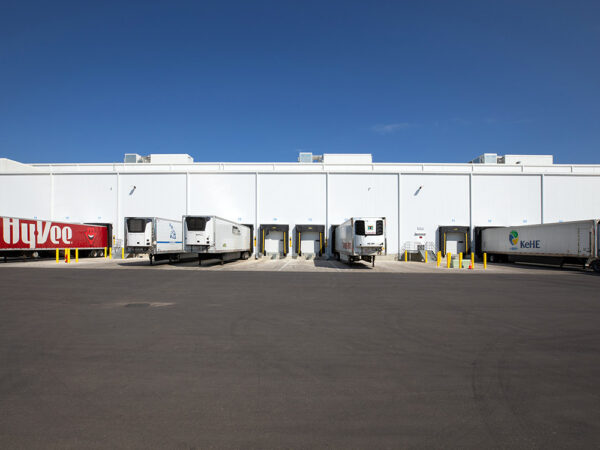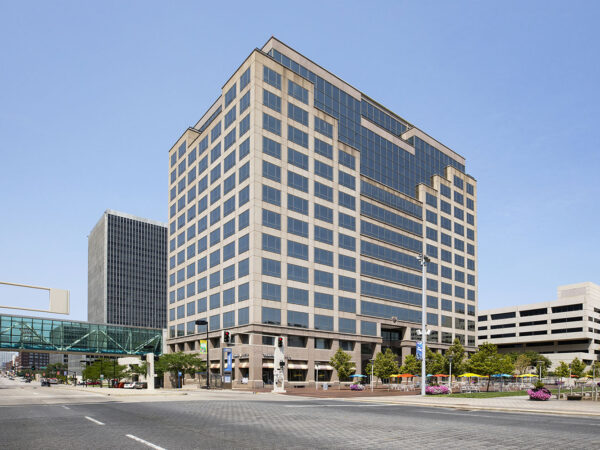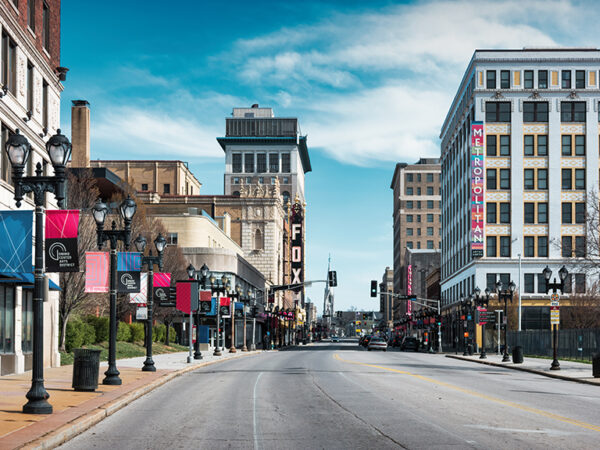Newmark Zimmer’s St. Louis market reports provide a comprehensive overview of current real estate conditions by sector and submarket. Newmark Zimmer is constantly monitoring market indicators, tracking and analyzing supply and demand drivers, cyclical patterns and industry trends. The following quarterly research data examines the multifaceted St. Louis commercial real estate market.
The St. Louis industrial market recorded a net absorption in the fourth quarter of 2024 totaled 181,615 SF, following 2.1 MSF in 3Q24—the highest quarterly total since 2Q22. The construction pipeline currently stands at 3.2 million SF, with 79% consisting of build-to-suit (BTS) projects. Speculative construction is expected to remain limited in 2025. Vacancy held steady at 4.6%, supported by positive net absorption from various mid-sized deals and only 150,000 SF of new deliveries to the market. This stable vacancy rate underpins rental rate growth fundamentals and is likely to encourage developers to break ground in 2025. Year-over-year, asking rental rate growth for the overall market was negative, declining by 3.1%.
The St. Louis office market tightened during the quarter with 264,183 SF of net absorption, bringing the year-to-date total to negative 48,150 SF. This marks two consecutive quarters of positive absorption, as tenants capitalize on favorable conditions. The Clayton submarket closed 2024 with 460,864 SF of net absorption and is projected to lead all submarkets in 2025. The non-owner-occupied construction pipeline has remained dormant since the third quarter of 2022, with only 41,000 SF currently under construction. Vacancy decreased by 40 basis points to 13.5% during the quarter and is expected to remain steady over the next year as the market continues to recalibrate. Year-over-year, asking rental rates remained essentially flat, declining by 0.4%.
The St. Louis retail market in Q4 2024 remained stable, with vacancy rates showing minimal fluctuations and steady leasing activity across various retail sectors. Rental rates reflected consistent demand, while new developments and redevelopments contributed to market growth. Investment activity saw notable retail property sales, indicating continued interest from investors. Looking ahead to 2025, retail demand is expected to remain strong, supported by consumer spending trends and retailer expansions. However, the impact of e-commerce will continue shaping leasing dynamics. Economic factors such as inflation and interest rates may influence investment decisions, while a healthy development pipeline suggests continued growth in the region’s retail landscape.
The pace of investment activity in the St. Louis market slowed during the past four quarters, with sales volume totaling $2.1 billion, a decrease of 32.7% compared with the prior five-year average. As a leading second-tier market, the St. Louis Metropolitan area ranked seventh out of the largest 13 Midwest markets in total sales volume during the past 12 months, with multifamily and retail assets combining for 62.0% of the Metro’s activity.
For a more detailed view of the industrial, office, retail and investment commercial real estate markets, please visit the research section of Newmark Zimmer’s website. Additionally, national reports and market insights are available online through Newmark.



